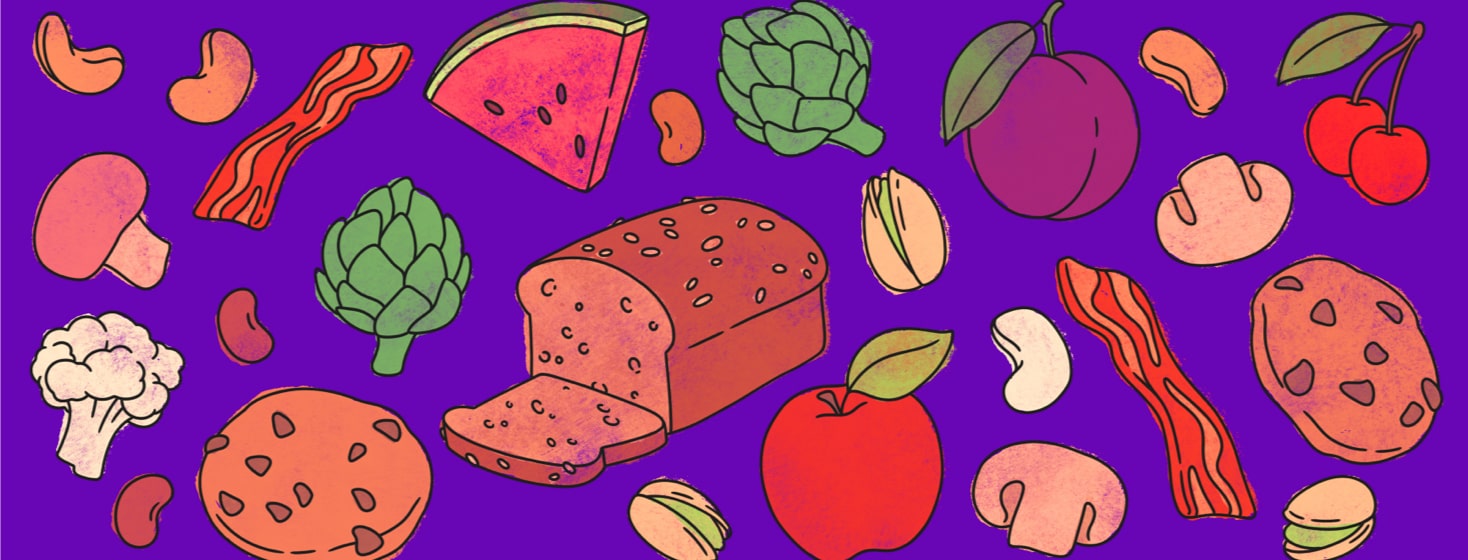Crohn's Disease and the FODMAP Elimination Diet
There was a time when doctors believed that diet could cause Crohn's disease. They now know this is not true. But some diets may trigger Crohn's or worsen its symptoms. And, fortunately, some diets may help improve symptoms for people with Crohn's disease. One example is the low FODMAP diet.1,2
What are FODMAPs?
FODMAP stands for Fermentable Oligo-, Di- and Mono-saccharides and Polyols. These are gas-producing sugars that the human body cannot easily digest. These sugars occur naturally in many different types of food. Many people can eat them with no problems. But they may cause symptoms in people with sensitive guts.2,3
FODMAPs move slowly through the small intestine and attract water as they go. When they reach the large intestine, gut bacteria use FODMAPs as fuel. The bacteria digest the FODMAPs quickly and produce gas.2,3
People with Crohn's disease typically have sensitive gut walls. When they eat FODMAPs, the extra water and gas in the intestines can stress the gut wall. This may cause symptoms such as pain, bloating, excessive gas, diarrhea, or constipation.2,3
What is the FODMAP elimination diet for Crohn's?
The goal of the FODMAP elimination diet is not to avoid foods that contain FODMAPs forever. The diet is a 3-step plan to help guide you in which FODMAPs to avoid.2,4
Step 1 is a low FODMAP diet. This means avoiding any high-FODMAP foods. This stage should continue until symptoms improve.2,4
Step 2 is reintroduction. This involves continuing to follow the low FODMAP diet. But you will slowly introduce different high FODMAP food groups. This can help you learn which foods you are most sensitive to. Try each FODMAP group by itself, then introduce another group if you have no symptoms.2,4
Step 3 is a personalized FODMAP diet. This uses the information you learned from step 2. You can eat the foods you were fine with and avoid the foods that made your symptoms worse. The goal is to have the least restrictive diet possible to make sure you get the vitamins and nutrients your body needs.2,4
What foods are part of the low FODMAP diet?
It is not always obvious which foods are low or high in FODMAPs. Foods need to be tested in a lab to know the FODMAP content. Different foods of the same type can be low or high FODMAP. Find some examples below.3
For vegetables:3
- High FODMAP: Artichoke, asparagus, cauliflower, garlic, green peas, mushrooms, onion, sugar snap peas
- Low FODMAP: Eggplant, green bell pepper, carrot, cucumber, lettuce, potato, zucchini
For fruits:3
- High FODMAP: Apples, cherries, dried fruit, mangoes, nectarines, peaches, pears, plums, watermelon
- Low FODMAP: Cantaloupe, kiwi, mandarin, orange, pineapple
For dairy or dairy alternatives:3
- High FODMAP: Milk, evaporated milk, ice cream, soy milk made from whole soybeans, sweetened condensed milk, yogurt
- Low FODMAP: Almond milk, brie or camembert cheese, feta cheese, hard cheeses, lactose-free milk, soy milk made from soy protein
For proteins:3
- High FODMAP: Most beans, processed meat, marinated meat
- Low FODMAP: Eggs, firm tofu, plain cooked meat or seafood, tempeh
For carbohydrates:3
- High FODMAP: Bread made from wheat, rye, or barley, breakfast cereal, cookies, snack products
- Low FODMAP: Oats, corn, quinoa, plain rice cakes, wheat, rye, and barley-free breads
For sweeteners:3
- High FODMAP: High-fructose corn syrup, honey, artificial sugar alternatives
- Low FODMAP: Dark chocolate, maple syrup, table sugar
For nuts and seeds:3
- High FODMAP: Cashews, pistachios
- Low FODMAP: Macadamias, peanuts, pumpkin seeds, walnuts
More on Crohn's and the low FODMAP diet
This is not a complete list of low-FODMAP foods. You can use a phone app, like the Monash University FODMAP Diet App, to look up food while on the go.3
The low FODMAP diet will not cure Crohn's disease. But research shows that it can reduce pain, bloating, and gas for some people with Crohn's. However, this research is limited. More research is needed to understand the impact of FODMAPs on people with Crohn's disease.2

Join the conversation